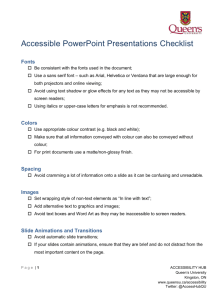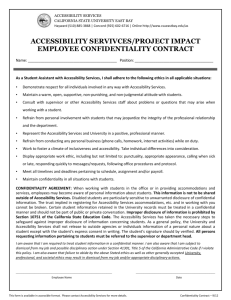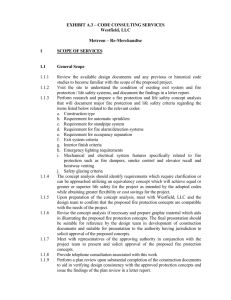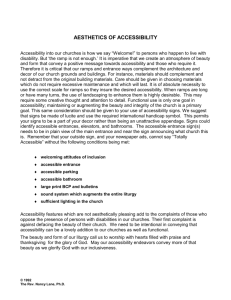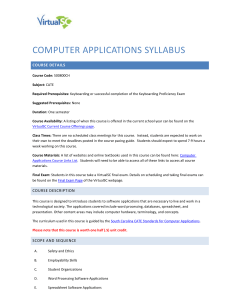Guidelines and Tips for Note-Takers
advertisement
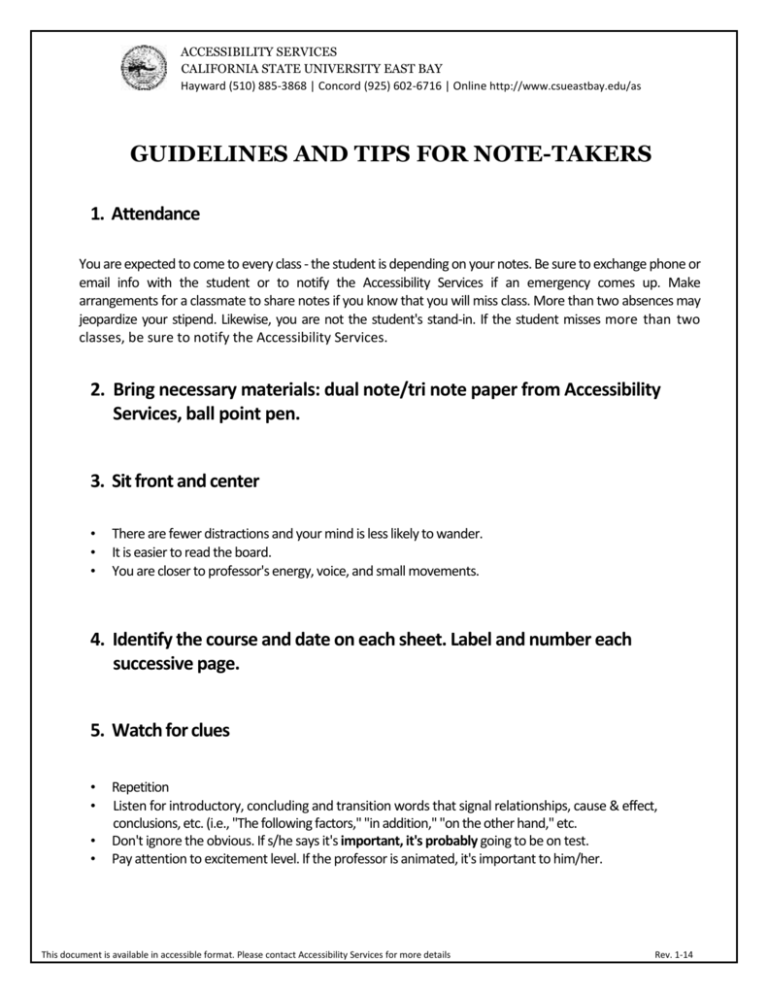
ACCESSIBILITY SERVICES CALIFORNIA STATE UNIVERSITY EAST BAY Hayward (510) 885-3868 | Concord (925) 602-6716 | Online http://www.csueastbay.edu/as GUIDELINES AND TIPS FOR NOTE-TAKERS 1. Attendance You are expected to come to every class - the student is depending on your notes. Be sure to exchange phone or email info with the student or to notify the Accessibility Services if an emergency comes up. Make arrangements for a classmate to share notes if you know that you will miss class. More than two absences may jeopardize your stipend. Likewise, you are not the student's stand-in. If the student misses more than two classes, be sure to notify the Accessibility Services. 2. Bring necessary materials: dual note/tri note paper from Accessibility Services, ball point pen. 3. Sit front and center • • • There are fewer distractions and your mind is less likely to wander. It is easier to read the board. You are closer to professor's energy, voice, and small movements. 4. Identify the course and date on each sheet. Label and number each successive page. 5. Watch for clues • • • • Repetition Listen for introductory, concluding and transition words that signal relationships, cause & effect, conclusions, etc. (i.e., "The following factors," "in addition," "on the other hand," etc. Don't ignore the obvious. If s/he says it's important, it's probably going to be on test. Pay attention to excitement level. If the professor is animated, it's important to him/her. This document is available in accessible format. Please contact Accessibility Services for more details Rev. 1-14 ACCESSIBILITY SERVICES CALIFORNIA STATE UNIVERSITY EAST BAY Hayward (510) 885-3868 | Concord (925) 602-6716 | Online http://www.csueastbay.edu/as 6. Record • • • Leave a larger left margin. Use left side for main ideas, key words, topical outlines; Use right side for notes explanations, definitions, conclusions, etc. Anything on the board belongs in the notes, including pictures and diagrams. Use graphic symbols to organize and label information: ■ ■ ■ ■ ( ), [ ] O, □ to group information * → CAPS and underlines for important info > for greater than; < for less than ?? for confusing points or if you get lost during the lecture • • Write complete sentences when material is important (i.e., technical definitions.) Use abbreviations carefully. (Set up mutually acceptable abbreviations with the student and provide a glossary.) If you are unsure of a word's spelling, write "sp?" above the word. • Include class discussion and homework questions, indicating students' versus teacher's comments by labeling "S" and "T". Do not assume the unimportance of material. Write down all points discussed. Do not assume that the student has previous understanding of the material. Be unbiased. Clearly label anything that represents your own opinion or attitude. Record all assignments, references and special notices accurately. Clearly note all due-dates, room numbers, addresses, page numbers and book titles. • • • Accessibility Services and the students we serve thank you very much! This document is available in accessible format. Please contact Accessibility Services for more details Rev. 1-14






